
漢德百科全書 | 汉德百科全书
 UEFA European Championship 2020
UEFA European Championship 2020
 Belarus
Belarus
 UEFA European Championship 2020
UEFA European Championship 2020
 Group C
Group C

 Sport
Sport
 (F)UEFA Nations League
(F)UEFA Nations League
 UEFA Nations League
UEFA Nations League
 UEFA Nations League D- Group 2
UEFA Nations League D- Group 2

 Bulgaria
Bulgaria
 UEFA European Championship 2020
UEFA European Championship 2020
 Group A
Group A

 Sport
Sport
 (F)UEFA Nations League
(F)UEFA Nations League
 UEFA Nations League
UEFA Nations League
 UEFA Nations League C - Group 3
UEFA Nations League C - Group 3
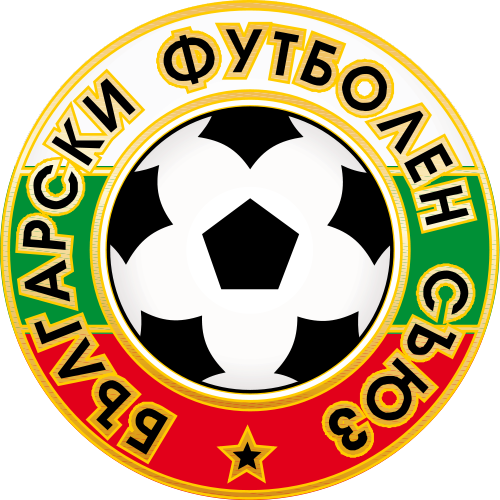
 UEFA European Championship 2016
UEFA European Championship 2016
 UEFA European Championship 2020
UEFA European Championship 2020
 Group C
Group C
 Northern Ireland
Northern Ireland

 Sport
Sport
 (F)UEFA Nations League
(F)UEFA Nations League
 UEFA Nations League
UEFA Nations League
 UEFA Nations League B - Group 3
UEFA Nations League B - Group 3
 United Kingdom
United Kingdom

 Belgium
Belgium
 FIFA Fussball-Weltmeisterschaft 2014
FIFA Fussball-Weltmeisterschaft 2014
 FIFA Fussball-Weltmeisterschaft 2018
FIFA Fussball-Weltmeisterschaft 2018
 Group G
Group G
 FIFA Fussball-Weltmeisterschaft 2022
FIFA Fussball-Weltmeisterschaft 2022
 FIFA Fussball-Weltmeisterschaft 2022
FIFA Fussball-Weltmeisterschaft 2022
 Group F
Group F
 UEFA European Championship 2016
UEFA European Championship 2016
 UEFA European Championship 2020
UEFA European Championship 2020
 Group I
Group I

 UEFA European Championship 2024
UEFA European Championship 2024

 Sport
Sport
 (F)UEFA Nations League
(F)UEFA Nations League

 Sport
Sport
 (F)Soccer at the Olympic Games
(F)Soccer at the Olympic Games
 UEFA Nations League
UEFA Nations League
 UEFA Nations League A - Group 2
UEFA Nations League A - Group 2

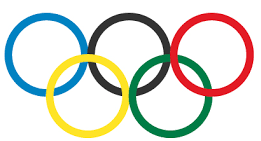

Bilbao (bask. auch Bilbo[2]) ist die Hauptstadt der Provinz Bizkaia (spanisch: Vizcaya) und größte Stadt der Autonomen Gemeinschaft Baskenland in Spanien.
Weiter ist sie die wichtigste Industrie- und Hafenstadt des Baskenlands und hat zuzüglich des Umlands fast 900.000 Einwohner. Mit 345.110 Einwohnern im Stadtgebiet[3] ist Bilbao eine der zehn größten Städte Spaniens.Die Stadt liegt an der Ría de Bilbao, die bei Portugalete in den Golf von Biscaya (Kantabrisches Meer) mündet. In Basauri vereinigen sich die Flüsse Nervión und Ibaizabal (baskisch für Breiter Fluss) und fließen von dort gemeinsam in die Ría. Die Gezeitengrenze liegt in der Altstadt etwa an der San-Antón-Brücke.
Diego López V de Haro gründete die Stadt an der Mündung des Nervión auf dem Gebiet der Vorgängerkirche von Begoña am 15. Juni 1300. Rechtliche Grundlage war der am 15. Juni 1300 in Valladolid geschriebene und am 4. Januar 1301 durch Ferdinand IV. von Kastilien und León in Burgos bestätigte Gründungsbrief (carta puebla). In der Einleitung dieses Gründungsbriefes heißt es:
En el nombre de Dios é de la vgen vienaventurada Sancta María. Sepan por esta carta quantos la vieren é oieren como yo Diego Lope de Haro, sennor de Vizcaia, en uno con mi fijo Don Lope Diaz é con placer de todos los vizcaynos, fago en Bilvao de parte de Vegonna nuevamente población é villa qual dizen el puerto de Bilvao...(dt.: Im Namen Gottes und der seligen heiligen Jungfrau Maria. Wisst, dass durch diesen Brief, wenn ihr ihn sehen oder davon hören mögt, wie ich, Diego Lope de Haro, Graf von Vizcaya, einig mit meinem Sohne Don Lope Diaz und zur Freude aller Vizcaynos, mache in Bilvao auf dem Teil der Vegonna (Begoña) von neuem Ortschaft und Gemeinde, die man Hafen von Bilvao nennen soll...)
Zuvor hatte hier u. a. schon eine römische Siedlung namens Bellum Vadum existiert. Daraus soll sich über die Zwischenstufe Bilbaum[4] der heutige Stadtname abgeschliffen haben, so dass man bei Bilbao auf deutsch von Schönfurt sprechen könnte.[5][6] Weitere Theorien führen den Namen auf das baskische bi albo[7] (dt.: zwei Seiten, auf die zwei Ufer der Ría referierend) oder auf die Burg Biribilbao zurück, die sich nahe der Kirche San Anton befand.
Zum Zeitpunkt der Gründung befand sich dort, wo heute Bilbao la Vieja steht, ein kleines Dorf von Eisenschmieden, Seeleuten und Bauern. Die ersten Straßen Bilbaos waren Somera, Artekale sowie die Tenderia.
 FIFA Fussball-Weltmeisterschaft 2018
FIFA Fussball-Weltmeisterschaft 2018
 Group D
Group D
 UEFA European Championship 2016
UEFA European Championship 2016
 UEFA European Championship 2020
UEFA European Championship 2020
 Group H
Group H
 Iceland
Iceland

 Sport
Sport
 (F)UEFA Nations League
(F)UEFA Nations League
 UEFA Nations League
UEFA Nations League
 UEFA Nations League A - Group 2
UEFA Nations League A - Group 2

 FIFA Fussball-Weltmeisterschaft 2018
FIFA Fussball-Weltmeisterschaft 2018
 Group H
Group H
 FIFA Fussball-Weltmeisterschaft 2022
FIFA Fussball-Weltmeisterschaft 2022
 FIFA Fussball-Weltmeisterschaft 2022
FIFA Fussball-Weltmeisterschaft 2022
 Group C
Group C
 UEFA European Championship 2016
UEFA European Championship 2016
 UEFA European Championship 2020
UEFA European Championship 2020
 Group G
Group G

 UEFA European Championship 2024
UEFA European Championship 2024
 Poland
Poland

 Sport
Sport
 (F)UEFA Nations League
(F)UEFA Nations League

 Sport
Sport
 (F)Soccer at the Olympic Games
(F)Soccer at the Olympic Games
 UEFA Nations League
UEFA Nations League
 UEFA Nations League A - Group 3
UEFA Nations League A - Group 3


 Bosnia Herzegovina
Bosnia Herzegovina
 FIFA Fussball-Weltmeisterschaft 2014
FIFA Fussball-Weltmeisterschaft 2014
 UEFA European Championship 2020
UEFA European Championship 2020
 Group J
Group J

 Sport
Sport
 (F)UEFA Nations League
(F)UEFA Nations League
 UEFA Nations League
UEFA Nations League
 UEFA Nations League B - Group 3
UEFA Nations League B - Group 3

 UEFA European Championship 2020
UEFA European Championship 2020

 History
History
 ITU World Championship Series
ITU World Championship Series
 Silk road
Silk road

 Sport
Sport
 Triathlon
Triathlon
 Hungary
Hungary

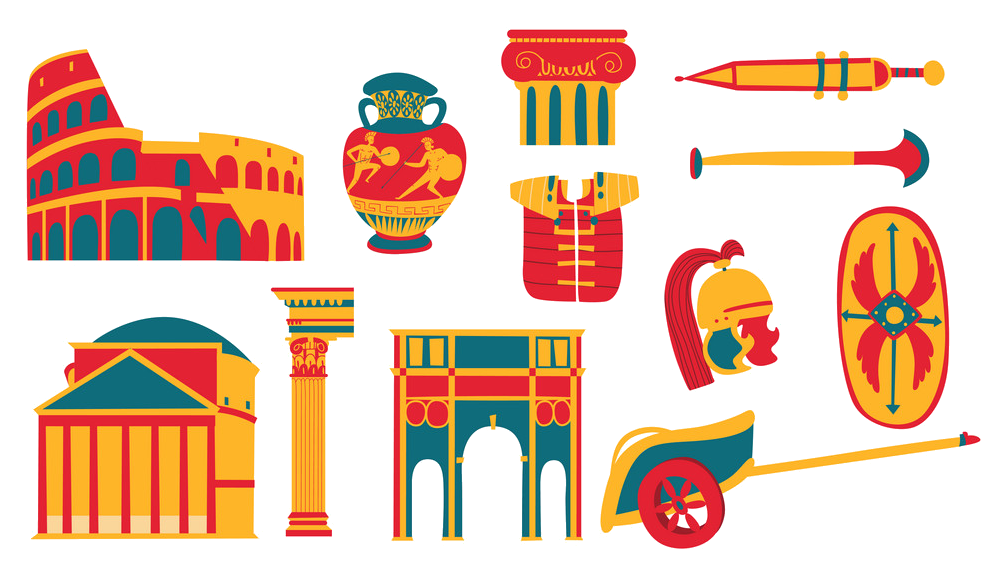 Cities founded by the Romans
Cities founded by the Romans

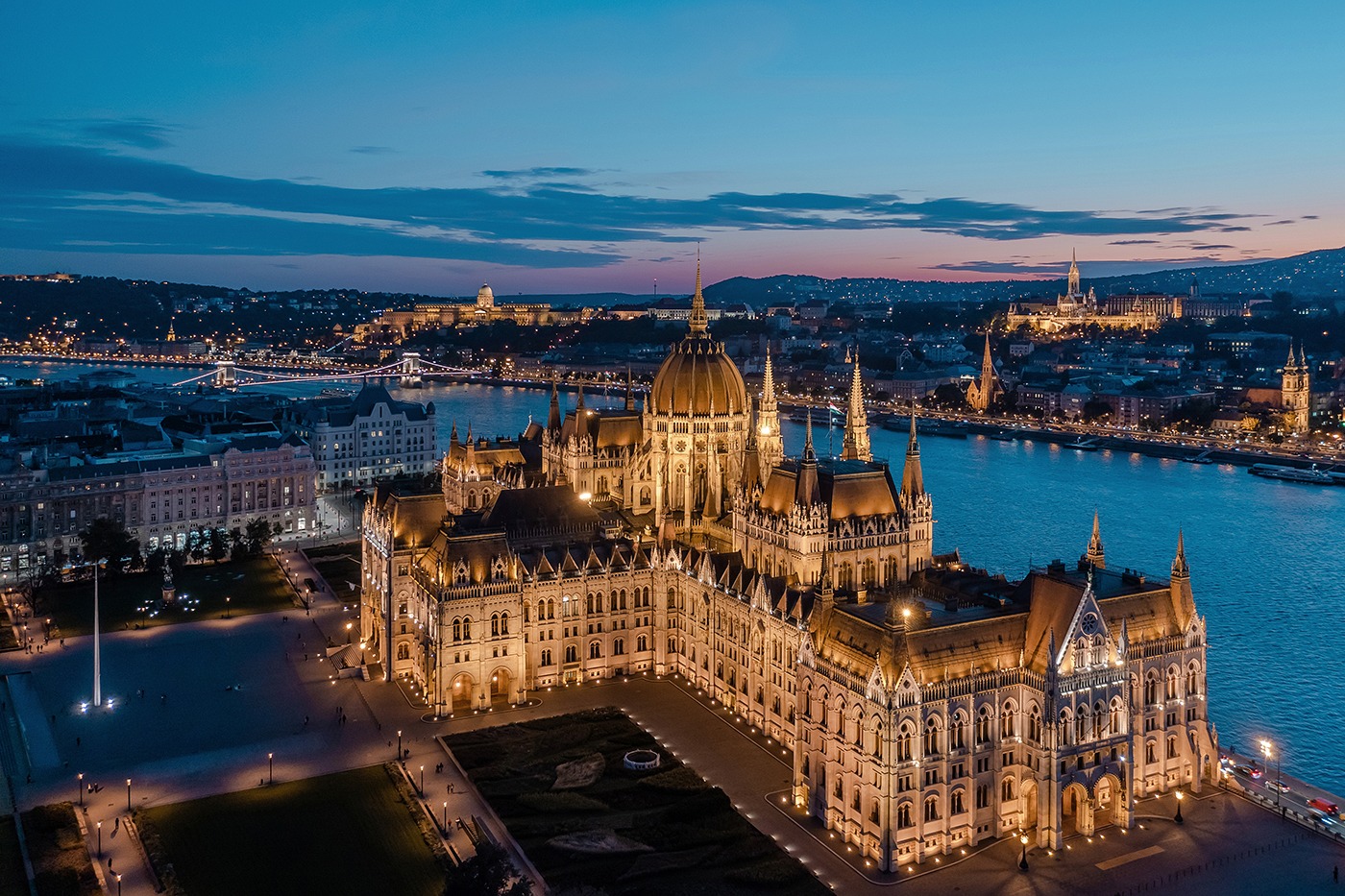

Budapest (ungarische Aussprache ['budɒpɛʃt];  anhören?/i) ist die Hauptstadt und zugleich größte Stadt Ungarns. Mit über 1,7 Millionen Einwohnern ist Budapest die zehntgrößte Stadt der Europäischen Union. Laut dem britischen Marktforschungsunternehmen Euromonitor International gehört sie zu den zwanzig am häufigsten von Touristen besuchten Städten Europas.[3] Die Einheitsgemeinde Budapest entstand 1873 durch die Zusammenlegung der zuvor selbstständigen Städte Buda (dt. Ofen), Óbuda (Alt-Ofen), beide westlich der Donau, und Pest östlich der Donau. Der Name Budapest selbst tauchte zuvor nicht auf, üblich im Sprachgebrauch war Pest-Buda.
anhören?/i) ist die Hauptstadt und zugleich größte Stadt Ungarns. Mit über 1,7 Millionen Einwohnern ist Budapest die zehntgrößte Stadt der Europäischen Union. Laut dem britischen Marktforschungsunternehmen Euromonitor International gehört sie zu den zwanzig am häufigsten von Touristen besuchten Städten Europas.[3] Die Einheitsgemeinde Budapest entstand 1873 durch die Zusammenlegung der zuvor selbstständigen Städte Buda (dt. Ofen), Óbuda (Alt-Ofen), beide westlich der Donau, und Pest östlich der Donau. Der Name Budapest selbst tauchte zuvor nicht auf, üblich im Sprachgebrauch war Pest-Buda.
Budapest liegt an der Donau, die an dieser Stelle das ungarische Mittelgebirge verlässt und in das ungarische Tiefland fließt. Die höchste Erhebung in Budapest ist der zu den Budaer Bergen zählende 527 Meter hohe János-Berg (ungarisch János-hegy). Weitere Budaer Berge sind der Gellértberg (Gellért-hegy), der Burgberg (Várhegy), der Rosenhügel (Rózsadomb), der Sonnenberg (Naphegy), der Adlerberg (Sashegy), der Martinsberg (Mártonhegy), der Schwabenberg (Svábhegy) und der Széchenyiberg (Széchenyi-hegy). Geotektonisch gesehen liegt die Stadt auf einer Bruchstelle, deshalb ist besonders Buda so reich an Thermalquellen.
Budapests Geschichte beginnt um 89 mit der Gründung eines römischen Militärlagers in ehemals vom keltischen Stamm der Eravisker besiedeltem Gebiet. In der Folge entstand um das Lager die römische Siedlung Aquincum, die zwischen 106 und 296 Hauptstadt der Provinz Pannonia inferior war. Unter römischer Herrschaft prosperierte die Stadt, es lassen sich ein Statthalterpalast, mehrere Amphitheater und Bäder nachweisen, außerdem wurde die an der gefährdeten römischen Donaugrenze gelegene Stadt mit einer Mauer versehen.
Die später christianisierten und sesshaft gewordenen Ungarn wohnten in Dörfern mit Kirchen und betrieben Ackerbau und Viehzucht. Im Zentrum wichtiger Verkehrswege gewann Pest immer mehr an Bedeutung. Bereits zu dieser Zeit entstand über die Donau (etwa bei der heutigen Elisabethbrücke) ein reger Fährverkehr zum gegenüberliegenden Buda. Mit der Krönung Stephans I. (am Weihnachtstag 1000 oder 1. Januar 1001) zum ersten König von Ungarn bauten die Ungarn ihre Vorherrschaft aus. Durch den Einfall der Mongolen („Mongolensturm“) 1241 kam es nach der Schlacht bei Muhi fast zur völligen Zerstörung. Die königliche Residenz wurde zunächst nach Visegrád verlegt. 1308 wurde die Stadt erneuert und 1361 Hauptstadt des Königreiches. 1514 fand ein Bauernaufstand statt.
布达佩斯(匈牙利语:Budapest,发音:'budɒpɛʃt)是匈牙利首都[6],也是该国主要的政治、商业、运输中心和最大的城市[7],也被认为是东欧一个重要的中继站[8]。布达佩斯的人口在1980年代中期曾达到高峰207万(布达佩斯都会区人口达到2,451,418人[9]),目前仅有约170万居民,它是欧洲联盟第七大城市。该市是在1873年由位于多瑙河右岸(西岸)的城市布达和古布达以及左岸(东岸)城市佩斯合并而成的[10][11]。此前没有布达佩斯这个称呼,过去人们一般将它称为佩斯-布达(Pest-Buda)。
布达佩斯有记载的历史开始于罗马帝国89年建立的的一个城堡阿奎库以及它北部产生的居民区,这个居民区位于今天的老布达。当时当地的居民主要是凯尔特人。从106年开始一直到4世纪阿奎库是潘诺尼亚省的省会,它位于潘诺尼亚的自然边界多瑙河上。其城堡对于罗马帝国来说有重要的地位,因此自然成为总督的驻地。107年哈德良开始在这里建造总督宫殿。
从1526年开始哈布斯堡王朝获得了匈牙利国王的位置。哈布斯堡王朝终于战胜了奥斯曼帝国恢复了匈牙利。但是布达与佩斯的处境并没有任何变化,统治它们的依然是外族人,而且它们的居民依然必须负很高的税。市内爆发市民暴动,但是被镇压。1723年佩斯成为王国政府的驻地。1838年佩斯发大水,七万人丧生。虽然如此佩斯依然是18世纪和19世纪发展最快的城市。到1800年,佩斯的人口在一个世纪里增长了20倍,达到600,000人。1780年哈布斯堡王朝设定德语为官方语言,试图以此来控制当地不断爆发的暴动。同时他们从德国向匈牙利移民。佩斯城内大多数居民是德国人。由于布达和佩斯市内有各种民族的人生活,而每个民族对这两座城市都有自己的名字,因此布达佩斯今天在许多语言中均有自己的名字。
ブダペストまたはブダペシュト(ハンガリー語: Budapest, 英語:[ˈbuːdəpɛst], [ˈbuːdəpɛʃt] or [ˈbʊdəpɛst]; ハンガリー語発音: [ˈbudɒpɛʃt] (![]() 音声ファイル))は、ハンガリーの首都であり、同国最大の都市である[2]。
音声ファイル))は、ハンガリーの首都であり、同国最大の都市である[2]。
「ブダペスト」として一つの市でドナウ川の両岸を占めるようになったのは1873年11月17日に西岸のブダとオーブダ、東岸のペストが合併してからである[3][4]。
ドナウ川河畔に位置し、ハンガリーの政治、文化、商業、産業、交通の一大中心都市で[5]、東・中央ヨーロッパ (en) では最大、欧州連合の市域人口では8番目に大きな都市である。しばしばハンガリーのプライメイトシティとも表現される[6]。
ブダペストの市域面積は525km2 (202.7 sq mi)[3]で、2011年の国勢調査によるブダペストの人口は174万人[7]、ピークであった1989年の210万人より減少している[8]。これは、ブダペスト周辺部の郊外化によるものである[9]。ブダペスト都市圏(通勤圏)の人口は330万人である[10][11]。
ブダペストの歴史の始まりはローマ帝国のアクインクムとしてで、もともとはケルト人の集落であった[12][13]。アクインクムは古代ローマの低パンノニア属州の首府となっている[12]。マジャル人がブダペスト周辺にやって来たのは[14]9世紀頃である。最初の集落は1241年から1242年にかけてモンゴルの襲来 (en) により略奪された[15]。15世紀に[16]町が再建されるとブダペストはルネサンス期の人文主義者文化の中心となった[17]。続いてモハーチの戦いが起こり、オスマン帝国による150年間の支配が続き[18]、18世紀、19世紀に新しい時代に入ると町は発展し繁栄する。ブダペストは1873年にドナウ川を挟んだ都市の合併が行われると、世界都市となる[19]。また、1848年から1918年の第一次世界大戦勃発まで列強に含まれたオーストリア=ハンガリー帝国のウィーンに続く第二の首都であった。1920年のトリアノン条約によりハンガリーは国土の72%を失い、ハンガリーの文化や経済をブダペストがすべてを占めるようになった。ブダペストはその大きさや人口で圧倒的に優位に立ち、ハンガリーの他の都市を小さく見せていた[20]。ブダペストはハンガリー革命 (1848年)や1919年のハンガリー評議会共和国、1944年のパンツァーファウスト作戦、1945年のブダペスト包囲戦、1956年のハンガリー動乱など数々の歴史的な舞台の場でもあった。
ブダペストはヨーロッパでも最も美しい街の一つで[2][21][22]、ドナウ川河岸を含め世界遺産が広がりブダ城やアンドラーシ通り、英雄広場は良く知られている。ブダペスト地下鉄1号線Millenniumi Földalatti Vasútはロンドン地下鉄に次いで世界で2番目に古い地下鉄である[21][23]。ブダペストの他のハイライトはセーチェーニ温泉を含めた80の温泉で[24]世界でも最大の地下熱水系統がある[25]。世界で3番目に大きなシナゴーグであるドハーニ街シナゴーグや国会議事堂などもブダペストの見所である。ブダペストの観光客数は年間270万人に上り、ロンドンにある民間調査機関ユーロモニターによればブダペストは世界で37番目に旅行者が多い観光地であるとされている[26]。
Budapest /ˈbuːdəpɛst/ is the capital and the most populous city of Hungary, and the tenth-largest city in the European Union by population within city limits.[9][10][11] The city had an estimated population of 1,752,704 in 2016 distributed over a land area of about 525 square kilometres (203 square miles).[12] Budapest is both a city and county, and forms the centre of the Budapest metropolitan area, which has an area of 7,626 square kilometres (2,944 square miles) and a population of 3,303,786, comprising 33 percent of the population of Hungary.[13][14]
The history of the city began when an early Celtic settlement transformed into a Roman town of Aquincum,[15][16] the capital of Lower Pannonia.[15] The Hungarians arrived in the territory in the late 9th century.[17] By the 11th century, Buda and Óbuda (Old Buda) became the names of their settlements on the west bank of the river Danube, with a formerly Slavic and then German settlement Pest on the opposite side.[3][18] The area was pillaged by the Mongols in 1241.[18] The Battle of Mohács in 1526 was followed by nearly 150 years of Ottoman rule.[19] After the reconquest of Buda in 1686, the region entered a new age of prosperity. Pest-Buda became a global city with the unification of Buda, Óbuda, and Pest on November 17, 1873, with the name 'Budapest' given to the new capital.[12][20] Budapest also became the co-capital of the Austro-Hungarian Empire,[21] a great power that dissolved in 1918, following World War I. The city was the focal point of the Hungarian Revolution of 1848, the Battle of Budapest in 1945, and the Hungarian Revolution of 1956.[22][23]
Budapest is a Beta+ global city with strengths in commerce, finance, media, art, fashion, research, technology, education, and entertainment.[24][25] It is Hungary's financial centre[26] and the highest ranked Central and Eastern European city on Innovation Cities Top 100 index,[27][28][29] as well ranked as the second fastest-developing urban economy in Europe.[30] Budapest is host to many major international organization's regional offices, including the United Nations and ICDT,[31] furthermore it is the headquarters of the European Institute of Innovation and Technology,[32] the European Police College[33] and the first foreign office of the China Investment Promotion Agency.[34] Over 40 colleges and universities are located in Budapest, including the Eötvös Loránd University, Semmelweis University and the notable Budapest University of Technology and Economics.[35][36] Opened in 1896,[37] the city's subway system, the Budapest Metro, serves 1.27 million, while the Budapest Tram Network serves 1.08 million passengers daily.[38]
Budapest is cited as one of the most beautiful cities in Europe,[9][39][40] ranked as "the world's second best city" by Condé Nast Traveler,[41] and "Europe's 7th most idyllic place to live" by Forbes.[42] Among Budapest's important museums and cultural institutions is the Museum of Fine Arts. Further famous cultural institutions are the Hungarian National Museum, House of Terror, Franz Liszt Academy of Music, Hungarian State Opera House and National Széchényi Library. The central area of the city along the Danube River is classified as a UNESCO World Heritage Site and has many notable monuments, including the Hungarian Parliament, Buda Castle, Fisherman's Bastion, Gresham Palace, Széchenyi Chain Bridge, Matthias Church and the Liberty Statue.[43] Other famous landmarks include Andrássy Avenue, St. Stephen's Basilica, Heroes' Square, the Great Market Hall, the Nyugati Railway Station built by the Eiffel Company of Paris in 1877 and the second-oldest metro line in the world, the Millennium Underground Railway.[39] The city also has around 80 geothermal springs,[44] the largest thermal water cave system,[45] second largest synagogue, and third largest Parliament building in the world.[46] Budapest attracts 4.4 million international tourists per year, making it a popular destination in Europe.[47]
Budapest (prononcé [by.da.ˈpɛst] , hongrois : Budapest [ˈbu.dɒ.pɛʃt] Écouter ; allemand : Budapest ou anciennement Ofen-Pesth) est la plus grande ville et la capitale de la Hongrie. Elle se situe en aval du coude du Danube entre le massif de Transdanubie et l'Alföld. Ses habitants sont les Budapestois (en hongrois, budapesti, -ek).
La ville actuelle est créée en 1873 par la fusion de Buda — alors capitale de la Hongrie — de Pest et d'Óbuda1. Elle a pour origine le site d'Aquincum2, un point de peuplement celte3 devenu capitale de la Pannonie inférieure pendant l'époque romaine3. Les Magyars arrivent dans la région au IXe siècle. Leur premier point d'implantation est pillé par les Mongols en 1241-12424. La ville est reconstruite et devient l'un des centres de la culture humaniste de la Renaissance5 au XVe siècle6. Après près de 150 ans de domination ottomane, elle poursuit son développement et connaît son apogée avec l'épanouissement de l'ère industrielle aux XVIIIe et XIXe siècles. Après la fusion de 1873 et l'accession de la ville au rang de seconde capitale de l'Autriche-Hongrie, Budapest atteint les proportions et les caractéristiques d'une ville mondiale7. Marquée par les différentes traces léguées par l'histoire, Budapest a notamment été l'épicentre de la révolution hongroise de 1848, de la République des conseils de Hongrie de 1919, de l'opération Panzerfaust en 1944, de la bataille de Budapest de 1945 et de l'insurrection de 1956.
Considérée comme l'une des plus belles villes d'Europe et comme la « perle » du Danube8,1,9, son panorama, le quartier du château de Buda, l'avenue Andrássy et le métropolitain du Millénaire figurent au patrimoine mondial de l'UNESCO8,10. Destination touristique importante, la ville attire plus de 4,3 millions de visiteurs par an11.
Plus grande ville du pays, elle en est le principal centre politique, culturel, commercial et industriel. Elle abrite le Parlement hongrois, les bâtiments ministériels et les ambassades du pays ainsi que les sièges sociaux des entreprises installées en Hongrie. Son ancien statut de cocapitale de l'Autriche-Hongrie lui confère un rayonnement important dans la Mitteleuropa. La partition du royaume de Hongrie à la suite du traité de Trianon en 1920 en fait une ville démesurée pour la Hongrie dans ses frontières actuelles. La macrocéphalie dont est atteinte la ville se concrétise par la convergence de la plupart des réseaux routiers et ferroviaires du pays en son centre et des écarts démographiques et économiques disproportionnés entre la capitale et la province12 (près de 20 % de la population hongroise est budapestoise). Avec ses 1 702 297 habitants13 (l'aire urbaine en compte 2 524 697), Budapest est également la ville la plus peuplée d'Europe centrale (si l'on exclut Berlin de l'Europe centrale). Elle en est également considérée du point de vue des échanges économiques comme une importante plaque tournante14. Budapest abrite le siège de l'Institut européen d'innovation et de technologie (IET)15.
Budapest (IPA: [ˈbudɒpɛʃt]; pronuncia italiana moderna: /ˈbudapest/[1]) è la capitale e la maggiore città dell'Ungheria.
Amministrata come un comune autonomo, costituisce inoltre il centro primario del Paese per la vita politica, economica e culturale; al 2016 conta 1 759 407 abitanti, mentre la popolazione residente nell'area metropolitana ammonta a oltre 3 300 000 persone.
Budapest nacque ufficialmente nel 1873 dall'unione delle città storiche di Buda e Óbuda, ubicate sulla sponda destra del Danubio, con l'abitato di Pest, situato sulla riva opposta del fiume e anch'esso di antiche origini; fino al 1918 fu una delle due capitali dell'Impero austro-ungarico, dissoltosi al termine della prima guerra mondiale.
Nel XXI secolo, Budapest è diventata una metropoli globale e si è affermata come una popolare destinazione turistica: nel 2011, secondo i dati forniti da Euromonitor International, la capitale ungherese è stata la 25ª città più visitata del mondo[2].
Budapest ( /ˈbudɒpɛʃt/ (?·i)) es la capital y ciudad más poblada de Hungría,2 así como su principal centro industrial, comercial y de transportes.3 La ciudad posee 1,74 millones de habitantes (2011),4 una disminución significativa respecto de los casi 2,1 millones con que contaba a mediados de los años 1980,5 que representan un quinto de la población total de Hungría. Es la ciudad más poblada de Europa central-oriental y la séptima de la Unión Europea. La ciudad ocupa una superficie de 525 km²6 y su
/ˈbudɒpɛʃt/ (?·i)) es la capital y ciudad más poblada de Hungría,2 así como su principal centro industrial, comercial y de transportes.3 La ciudad posee 1,74 millones de habitantes (2011),4 una disminución significativa respecto de los casi 2,1 millones con que contaba a mediados de los años 1980,5 que representan un quinto de la población total de Hungría. Es la ciudad más poblada de Europa central-oriental y la séptima de la Unión Europea. La ciudad ocupa una superficie de 525 km²6 y su

Bukarest (rumänisch: București [bukuˈreʃtʲ];  Aussprache?/i) ist die Hauptstadt Rumäniens. Sie ist mit fast 1,9 Millionen Einwohnern[1] und einer urbanen Agglomeration von 2,2 Millionen Einwohnern die siebtgrößte Stadt der Europäischen Union.
Aussprache?/i) ist die Hauptstadt Rumäniens. Sie ist mit fast 1,9 Millionen Einwohnern[1] und einer urbanen Agglomeration von 2,2 Millionen Einwohnern die siebtgrößte Stadt der Europäischen Union.
Nachdem Bukarest 1659 Târgoviște als Landeshauptstadt endgültig abgelöst hatte, wurde es zum politischen, wirtschaftlichen und kulturellen Mittelpunkt der Walachei und später von Rumänien. Die Stadt verfügt über mehrere Universitäten, verschiedene andere Hochschulen sowie zahlreiche Theater, Museen und weitere Kultureinrichtungen.
Die kosmopolitische Hochkultur und der dominierende französische Einfluss der neubarocken Architektur der Stadt brachten ihr den Beinamen Micul Paris („Kleines Paris“, auch „Paris des Ostens“) ein.[2] In der Amtszeit des rumänischen Diktators Nicolae Ceaușescu wurden weiträumig historische Stadtviertel zerstört, um dem monumentalen Zuckerbäckerstil des Staatsoberhaupts Platz zu machen.
Bukarest wurde einer Legende nach von einem Hirten namens Bucur gegründet.[11] Bucurie bezeichnet im Rumänischen glückhafte Freude, und Bucur ist ein verbreiteter Familienname. Im etymologischen Sinn bedeutet București: Du bist froh.[12] Eine weitere Erzählung berichtet von dem getischen König Dromichaites,[13] der Freudenstadt errichtete.
Bukarest wird in einer auf den 20. September 1459 datierten Urkunde erstmals erwähnt.[14] Die Urkunde wurde von dem Woiwoden und Feldherrn Vlad Țepeș, mit dem Beinamen Drăculea, ausgestellt.
In der zweiten Hälfte des 15. Jahrhunderts entwickelte sich Bukarest, wo sich schon nach 1400 eine Handwerkersiedlung mit Schmiede, Töpferei und Gerberei nachweisen lässt, zum Curtea (Fürstensitz) der Walachei. Fürst Radu der Schöne bezeichnete am 14. Oktober 1465 Bukarest in einer Urkunde als Fürstensitz.[15] Die Stadt erlangte ihre zentralstädtische Bedeutung als fürstliches Macht- und Handelszentrum, das in einem Verdichtungsraum von Siedlungen lag. Zwischen 1459 und 1625 erscheinen allein 41 Siedlungen auf dem Gebiet des heutigen Bukarest.
Nachfolgend war Bukarest abwechselnd mit Tîrgoviște Hauptstadt der Walachei. Der Hauptmarkt entstand um die Lipscani-Straße.
布加勒斯特(罗马尼亚语:București),罗马尼亚首都,位于罗马尼亚东南部,瓦拉几亚平原中部,多瑙河支流登博维察河畔。有“小巴黎”之称。面积约228平方公里,人口近200万。它是罗马尼亚最大的城市,也是政治、经济、文化中心。若以以人口计算,布加勒斯特是欧盟第六大都市。
据历史记载,该市已有500多年的历史。1459年,布加勒斯特成为罗马尼亚要塞,1574年发展成为城市,1659年起成为瓦拉几亚公国首都。1862年成为统一的罗马尼亚国家首都。1877年5月9日罗马尼亚在此宣布独立。1947年为罗马尼亚人民共和国首都。1977年发生地震。1989年爆发革命,成为新罗马尼亚的首都。此后,经济不断发展,成为罗马尼亚具有代表性的城市。该市行政划分为六个区,设市长一名,各区区长一名,均由市民选举产生。布加勒斯特有两支著名的足球强队——布加勒斯特迪纳摩和布加勒斯特星队。位于布加勒斯特的罗马尼亚人民宫号称是世界第二大建筑物。
ブカレスト/ブクレシュティ(ルーマニア語: București、マジャル語・標準ドイツ語: Bukarest)は、ルーマニアの首都で同国最大の都市である。ブカレストはルーマニア南東部にあり、ドゥンボヴィツァ川河畔の都市でルーマニアの文化、産業、金融の中心都市である。
Bucharest (/ˈb(j)uːkərɛst/; Romanian: București [bukuˈreʃtʲ] ( listen)) is the capital and largest city of Romania, as well as its cultural, industrial, and financial centre. It is located in the southeast of the country, at 44°25′57″N 26°06′14″ECoordinates:
listen)) is the capital and largest city of Romania, as well as its cultural, industrial, and financial centre. It is located in the southeast of the country, at 44°25′57″N 26°06′14″ECoordinates:  44°25′57″N 26°06′14″E, on the banks of the Dâmbovița River, less than 60 km (37.3 mi) north of the Danube River and the Bulgarian border.
44°25′57″N 26°06′14″E, on the banks of the Dâmbovița River, less than 60 km (37.3 mi) north of the Danube River and the Bulgarian border.
Bucharest was first mentioned in documents in 1459. It became the capital of Romania in 1862 and is the centre of Romanian media, culture, and art. Its architecture is a mix of historical (neo-classical), interbellum (Bauhaus and art deco), communist-era and modern. In the period between the two World Wars, the city's elegant architecture and the sophistication of its elite earned Bucharest the nickname of "Little Paris" (Micul Paris).[9] Although buildings and districts in the historic city centre were heavily damaged or destroyed by war, earthquakes, and above all Nicolae Ceaușescu's program of systematization, many survived. In recent years, the city has been experiencing an economic and cultural boom.[10] In 2016, the historical city centre was listed as "endangered" by the World Monuments Watch.[11]
According to the 2011 census, 1,883,425 inhabitants live within the city limits,[6] a decrease from the 2002 census.[3] Adding the satellite towns around the urban area, the proposed metropolitan area of Bucharest would have a population of 2.27 million people.[12] According to Eurostat, Bucharest has a functional urban area of 2,412,530 residents (as of 2015).[5] Bucharest is the sixth-largest city in the European Union by population within city limits, after London, Berlin, Madrid, Rome, and Paris.
Economically, Bucharest is the most prosperous city in Romania[13] and is one of the main industrial centres and transportation hubs of Eastern Europe. The city has big convention facilities, educational institutes, cultural venues, traditional "shopping arcades", and recreational areas.
The city proper is administratively known as the "Municipality of Bucharest" (Municipiul București), and has the same administrative level as that of a national county, being further subdivided into six sectors, each governed by a local mayor.
Bucarest (en roumain București  ? /bu.kuˈreʃtʲ/ [Fiche], ou Municipiul București en version longue) est la capitale de la Roumanie.
? /bu.kuˈreʃtʲ/ [Fiche], ou Municipiul București en version longue) est la capitale de la Roumanie.
La ville est mentionnée pour la première fois en 1459 comme marché fortifié au carrefour des routes commerciales entre Târgoviște, alors capitale de la Valachie, Brașov en Transylvanie, et le port de San-Giorgio fondé par les Génois sur le Danube. Ce marché s'est rapidement développé et, au XVIIe siècle, il devient la capitale de la principauté de Valachie, puis, en 1859, de la Roumanie.
Lors du dernier recensement de 2011, la municipalité comptait 1 883 425 habitants, en diminution par rapport à 2002 et 1992. Bucarest reste la plus grande ville de Roumanie.
Bucarest (AFI: [ˈbuːkarest];[3] in romeno: București, pronuncia [bukuˈreʃtʲ]) è la capitale e la città più popolosa della Romania ed è la sesta più popolosa dell'Unione Europea. Posta nel sud del Paese, sul fiume Dâmbovița, è il maggiore centro industriale e commerciale del paese. Il territorio della città è interamente circondato dal distretto di Ilfov, pur non facendone parte, in quanto il municipio è l'unico della Romania a fare distretto di per sé.
Bucarest è la 6ª città per popolazione dell'Unione europea. Secondo le stime degli specialisti, Bucarest raccoglie più di tre milioni di persone al giorno e nei prossimi cinque anni questo numero supererà i quattro milioni. A questo si aggiungono le località intorno alla città, che fanno parte della futura area metropolitana, hanno una popolazione di circa 430.000.[4]
La prima menzione della località appare nel 1459. Nel 1862 divenne la capitale dei Principati Uniti; da allora ha subito cambiamenti continui, diventando il centro della scena artistica, culturale e mediatica rumena. L'architettura elegante e l'atmosfera urbana le portarono durante la Belle Époque il soprannome di "Piccola Parigi"[5], anche se diversi edifici e quartieri del centro storico furono danneggiati o interamente distrutti dalla guerra, dai terremoti e dal programma di sistemazione di Nicolae Ceausescu. Negli ultimi anni, la città ha vissuto un boom economico e culturale[6].
Secondo i dati preliminari del censimento del 2011, 1.677.985 abitanti vivono entro i limiti della città,[7] inferiore alla cifra registrata nel censimento del 2002.[8] L'area urbana si estende oltre Bucarest, con una popolazione di 1,93 milioni.[9] Con l'aggiunta di città satellitari attorno all'area urbana, l'area metropolitana di Bucarest avrebbe una popolazione di 2,2 milioni.[10] Secondo Eurostat, Bucarest ha un'area urbana più grande di 2.151.880 residenti.[11] Secondo dati non ufficiali, la popolazione è di oltre 3 milioni. Bucarest è la città più grande della Romania e la sesta nell'Unione europea secondo la popolazione entro i limiti della città.
Da un punto di vista economico, Bucarest è la città più prospera in Romania,[12] ed è uno dei principali centri industriali e dei nodi di trasporto nell'Europa orientale. La città dispone di strutture per convegni, istituti scolastici, aree culturali, centri commerciali e aree ricreative.
La città, avente lo stesso livello amministrativo dei distretti, è suddivisa in sei settori e amministrata dal Municipio di Bucarest.
Bucarest (en rumano: București,  /bu.kuˈreʃtʲ/ (?·i)) es la capital y ciudad más poblada de Rumania, así como su principal centro industrial, comercial y cultural. Está situada en el sureste del país, a orillas del río Dâmbovița. La ciudad cuenta con 2.400.000 habitantes, según datos del censo de 2016,1 lo que la convierte, además, en la décima ciudad más poblada de la Unión Europea.3
/bu.kuˈreʃtʲ/ (?·i)) es la capital y ciudad más poblada de Rumania, así como su principal centro industrial, comercial y cultural. Está situada en el sureste del país, a orillas del río Dâmbovița. La ciudad cuenta con 2.400.000 habitantes, según datos del censo de 2016,1 lo que la convierte, además, en la décima ciudad más poblada de la Unión Europea.3
La ciudad fue mencionada por primera vez en documentos escritos a comienzos de 1459. Desde entonces ha pasado por muchos cambios, pero el más notable fue convertirse en la capital de Rumania en 1862, por lo que se consolidó como el centro nacional de la comunicación, cultural y económico. Su ecléctica arquitectura mezcla estilos neoclásico, de entreguerras (Bauhaus y Art Deco), comunista y moderno. En el periodo de entreguerras, la arquitectura de la ciudad y la sofisticación de sus elites le valieron a Bucarest el apodo de "Pequeña París" (Micul Paris).4 Pese a que muchos edificios y distritos del centro fueron dañados o destruidos por la guerra, terremotos y el programa de sistematización de Nicolae Ceaușescu, la mayoría permanecieron en pie.
Económicamente, la ciudad es la más próspera de Rumania5 y es uno de los principales centros industriales y de transporte de Europa del Este. Como ciudad más desarrollada del país, Bucarest tiene también una amplia gama de instalaciones educativas. La superficie total de Bucarest es de 226 km². Hasta 1989, las zonas circundantes eran principalmente rurales, pero tras la Revolución Rumana se comenzaron a construir nuevos vecindarios alrededor de la ciudad. De hecho, la ciudad en sí administrativamente se conoce como Municipio de Bucarest (Municipiul București) y tiene el mismo nivel administrativo que un distrito, siendo dividida la ciudad en seis sectores.

 Belgium
Belgium
 Eurovision Song Contest,ESC
Eurovision Song Contest,ESC
 UEFA European Championship 2020
UEFA European Championship 2020

 History
History

 International cities
International cities
 *European Capital of Culture
*European Capital of Culture

 Economy and trade
Economy and trade
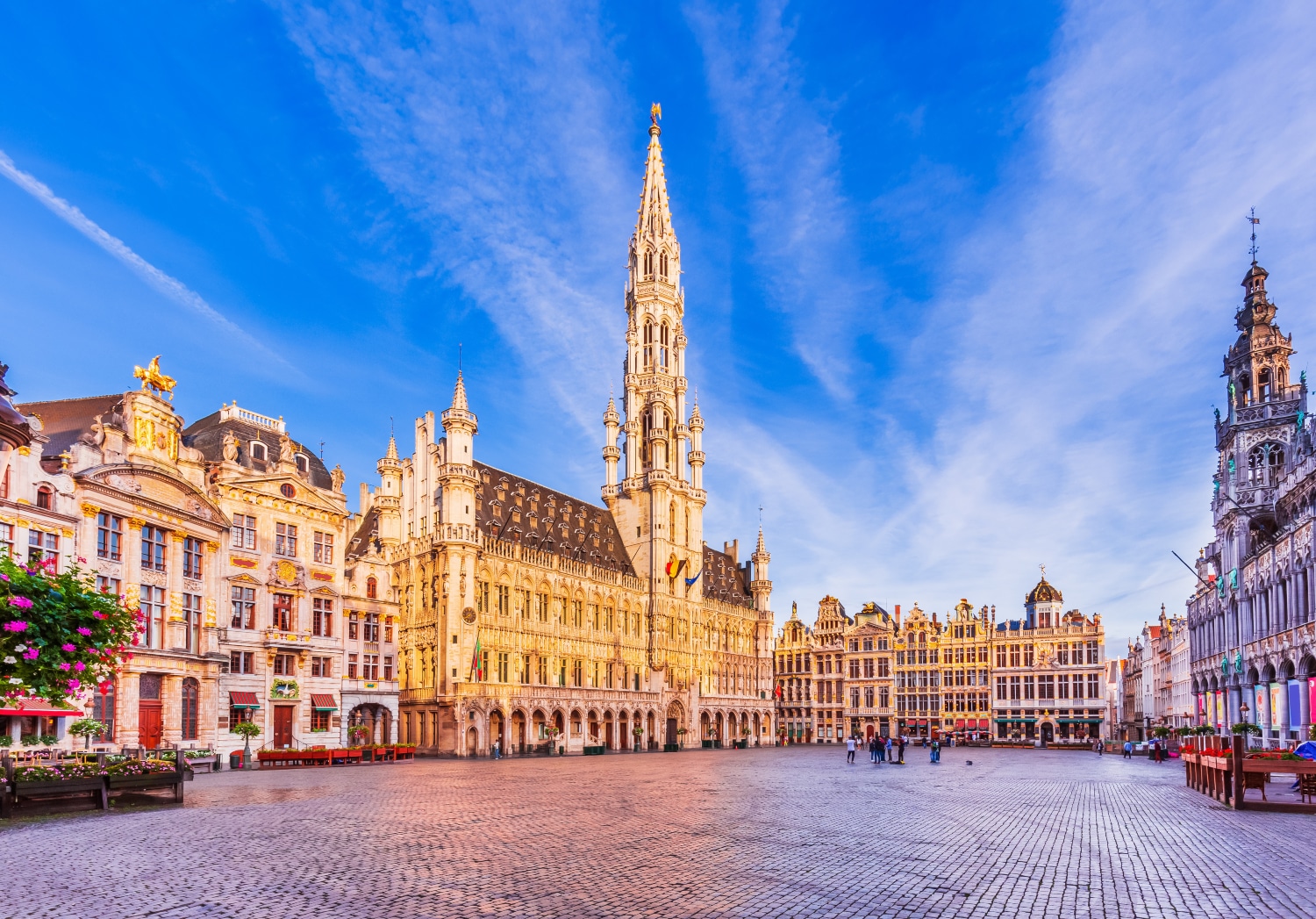

Mit Brüssel (französisch Bruxelles [bryˈsɛl], niederländisch Brussel [brɵsəɫ]) kann entweder eine Stadt in Belgien gemeint sein oder die größere Hauptstadtregion mit 19 Gemeinden beziehungsweise das gesamte städtische Gebiet der Hauptstadtregion.
Die zweisprachige Region Brüssel-Hauptstadt (französisch Région de Bruxelles-Capitale, niederländisch Brussels Hoofdstedelijk Gewest) ist neben Flandern und der Wallonischen Region eine von drei Regionen im föderalen belgischen Staatsaufbau. Die Region hat über eine Million Einwohner und besitzt eine höhere Bevölkerungsdichte als irgendeine deutsche Großstadt.[1] Sie ist daher nicht mit den weit ins Umland reichenden Metropolregionen vergleichbar, die in den letzten Jahren rund um viele europäische, unter anderem auch deutsche Großstädte definiert wurden. Der Ballungsraum Brüssel ist noch einmal wesentlich größer als die Region Brüssel.
Die Stadt Brüssel ist die Haupt- und Residenzstadt des Königreichs Belgien. Sie bildet das Zentrum der Region Brüssel-Hauptstadt, ist eine ihrer 19 Gemeinden und hat etwa 180.000 Einwohner. Dort haben mehrere föderale Institutionen ihren Sitz: Die Stadt Brüssel ist Verwaltungssitz der Region Brüssel-Hauptstadt. Hier befindet sich darüber hinaus der Verwaltungssitz der Französischen Gemeinschaft Belgiens, während die Wallonische Region ihren Sitz in Namur hat. Die Organe der Region Flandern und der Flämischen (niederländischsprachigen) Gemeinschaft sind fusioniert und haben ihren Sitz ebenfalls in der Stadt Brüssel. Zudem stellt die Stadt den Hauptsitz der Europäischen Union sowie den Sitz der NATO, ferner den des ständigen Sekretariats der Benelux-Länder und von EUROCONTROL dar.
Im Jahre 996 erstmals urkundlich erwähnt und im Mittelalter zur Hauptstadt des Herzogtums Brabant aufgestiegen, wurde Brüssel mit der Unabhängigkeit Belgiens 1830 zu dessen Hauptstadt erhoben. Zusammen mit seinen umliegenden Gemeinden ist Brüssel heute als Industrie- und Handelsstadt mit zwei Universitäten, mehreren Hochschulen, Akademien, Bibliotheken, Museen und Bühnen ein bedeutendes Wirtschafts-, Wissenschafts- und Kulturzentrum sowie ein wichtiger Verkehrsknotenpunkt im Zentrum des Landes.
Der Artikel Region Brüssel-Hauptstadt behandelt vor allem die Themen Politik, Verwaltung und Sprachensituation. Weitere und übergreifende Themen werden nachfolgend behandelt.
布鲁塞尔(法语:Bruxelles;荷兰语:Brussel)是比利时的首都和最大的城市,也是欧洲联盟的主要行政机构所在地。位于布鲁塞尔首都区的布鲁塞尔市,[1]。 在不同的语境中,布鲁塞尔有着不同的外延。她可能代表布鲁塞尔市(比利时的布鲁塞尔首都区中最大的地方自治体及首府,常住人口140,000),也可能代表布鲁塞尔首都区(据2008年2月1日统计,常住人口为1,067,162),或者也可能用于表示布鲁塞尔城市圈(常住人口1,350,000[2])。
欧洲联盟三个主要的机构当中,欧盟委员会和欧盟部长理事会位于布鲁塞尔,另一个重要机构欧洲议会在布鲁塞尔也有分处(全体议会在法国斯特拉斯堡),所以它有欧洲首都的美誉。另外,北大西洋公约组织的总部也设在布鲁塞尔。
布鲁塞尔是一个双语城市,通用法语和荷兰语,法语的使用者占较多数。另外,土耳其语、阿拉伯语等语言被布鲁塞尔的穆斯林广泛使用。
布鲁塞尔(Brussels)是比利时的首都和最大的城市,也是欧洲联盟(欧盟,EU)的主要行政机构所在地,北大西洋公约组织(北约,NATO)总部驻地,有欧洲的首都之称。另外也是200多个国际行政中心及超过1000个官方团体的日常会议举办城市。
布鲁塞尔位于塞纳河畔,北部是低平的弗兰德平原,南部是略有起伏的布拉邦特台地,平均海拔58米。上城依坡而建,为行政区,主要名胜有路易十六式建筑风格的王宫、皇家广场、埃格蒙宫、国家宫、皇家图书馆、现代古代艺术博物馆。下城为繁华的商业中心。市中心的“大广场”周围屹立着许多中世纪的哥特式建筑,其中以市政厅较为壮观。
布鲁塞尔拥有全欧洲最精美的建筑和博物馆、摩天大楼跟中世纪古建筑相得益彰。整座城市以皇宫为中心,沿“小环”而建,游览以步行为佳。
布鲁塞尔是一个双语城市,通用法语和荷兰语,法语使用者占较多数。另外土耳其语、阿拉伯语等语言也被布鲁塞尔的穆斯林广泛使用。
在欧洲联盟的四个主要机构中,欧洲理事会、欧盟委员会和欧盟理事会位于布鲁塞尔,另一个机构欧洲议会在布鲁塞尔也有分处(全体议会在法国斯特拉斯堡),所以它有“欧洲首都”的美誉。
ブリュッセル市(ブリュッセルし、フランス語: Ville de Bruxelles [ˈvil də bʀyˈsɛl] または Bruxelles-Ville、オランダ語: Stad Brussel [s̪t̪ɑt̪ ˈbrʏ.s̪əl̪] または Brussel-Stad)は、ブリュッセル首都圏地域を構成する最大の基礎自治体である。ベルギーの憲法上の首都である[2]が、実際にはブリュッセル首都圏地域全体で首都としての機能を果たしている。主としてブリュッセルの歴史的中心部から成り、ロンドンにおけるシティにたとえることができる。
ブリュッセル市は、ブリュッセルの歴史的な中心市街地に加えて、ブリュッセル首都圏地域内のいくつかの地区、すなわち北部のアレン(英語版)、ラーケンおよびネデル=オヴェル=エンベーク(英語版)、ならびに南部のルイーズ大通り(英語版)およびカンブルの森(英語版)から構成される。
ブリュッセル市の総面積は32.61 km2、2014年9月1日現在の総人口は173,540人で、人口密度は5,321.68人/km2である[1]。また2014年時点で、ブリュッセル市の人口約17万人のうち、約6万人が外国人(うち3万6千人がEU市民、2万4千人が非EU市民)となっている[3]。
The City of Brussels (French: Ville de Bruxelles [vil də bʁysɛl] or alternatively Bruxelles-Ville [bʁysɛl vil], Dutch: Stad Brussel [stɑd ˈbrɵsəl][2] or Brussel-Stad) is the largest municipality and historical centre of the Brussels-Capital Region, and the de jure capital of Belgium.[3] Besides the strict centre, it also covers the immediate northern outskirts where it borders municipalities in Flanders. It is the administrative centre of the European Union, thus often dubbed, along with the region, the EU's capital city.
The City of Brussels is a municipality consisting of the central historic town and certain additional areas within the greater Brussels-Capital Region, namely Haren, Laeken and Neder-Over-Heembeek to the north, and Avenue Louise/Louizalaan and the Bois de la Cambre/Ter Kamerenbos park to the south.
On 1 January 2017, the City of Brussels had a total population of 176,545. The total area is 32.61 km2 (12.59 sq mi) which gives a population density of 5,475 inhabitants per square kilometre (14,180/sq mi). As of 2007, there were approximately 50,000 registered non-Belgians in the City of Brussels.[4] In common with all the Brussels municipalities, it is legally bilingual (French–Dutch).
Bruxelles (prononcé [bʁy.sɛl]1 Écouter ; Brussel [ˈbrʏ.səl] Écouter en néerlandais ; Brüssel en allemand ; parfois aussi appelé aire urbaine de Bruxelles, Stedelijk gebied van Brussel en néerlandais, ou Grand Bruxelles2) est une agglomération de Belgique qui s'étend au-delà des limites administratives de la Région de Bruxelles-Capitale pour englober des parties du Brabant wallon et l'arrondissement de Hal-Vilvorde, et au centre de laquelle se trouve la ville de Bruxelles proprement dite.
La plupart des institutions de l’Union européenne, ainsi que de nombreuses organisations internationales entre autres lobbyistes, dont l’OTAN, ont leur siège en Région de Bruxelles-Capitale. Par extension, on dit donc « Bruxelles » pour désigner, en général et par métonymie, les institutions européennes (le plus souvent, la Commission européenne).
L'initiative Brussels Metropolitan, lancée en 2008, vise à mieux coordonner la ville et son arrière-pays pour valoriser le Grand Bruxelles en tant que métropole économique attrayante au cœur de l'Europe3, lui donner plus de poids sur le plan mondial et y stimuler la croissance et la création d'emplois4. Cette plateforme de coopération implique la participation de quatre organisations patronales - la FEB, BECI, le Voka et l'UWE4.
Bruxelles (nome francese; pronuncia /bʀy'sɛl/ o, meno correttamente, /bʀyk'sɛl/, italianizzata in /brukˈsɛl/[1]; in olandese Brussel, in tedesco Brüssel; in italiano storico Brusselle[2] o Borsella[3]) è un'area metropolitana del Belgio che ospita all'incirca 2,6 milioni di abitanti.[4]
Il comune di Bruxelles è uno dei 19 comuni della regione amministrativa di "Bruxelles-capitale", con cui non dovrebbe essere confuso. Questa regione è una delle tre regioni amministrative del Belgio, con la Regione vallone e la Regione fiamminga. L'area metropolitana di Bruxelles si estende oltre i confini amministrativi della Regione di Bruxelles in quanto comprende molti comuni situati nella regione fiamminga. Questa situazione è all'origine del conflitto linguistico in Belgio poiché molti residenti di Bruxelles, per lo più francofoni, sono stabiliti nella regione fiamminga di lingua olandese.
Bruxelles è considerata la capitale de facto dell'Unione europea in quanto sede di varie istituzioni, tra cui la Commissione europea, il Consiglio dell'Unione europea e parzialmente il Parlamento europeo (ufficialmente con sede a Strasburgo). Ad Evere ha inoltre sede il quartier generale della NATO. Bruxelles ospita anche il Comitato delle Regioni e il Comitato economico e sociale.
Gran parte dell'area metropolitana di Bruxelles è amministrata dalla regione di Bruxelles-Capitale, suddivisa in 19 comuni, tra cui quello del centro storico, il Comune di Bruxelles (Ville de Bruxelles/Brussel-stad). La città si estende però anche al di là dei confini della regione: vari comuni della periferia brussellese, amministrativamente parte della regione delle Fiandre, sono parte integrante del tessuto urbano di Bruxelles.[5] Tra questi Zaventem (sede dell'aeroporto internazionale), Kraainem (capolinea della metropolitana) e Tervuren (quartiere residenziale).
Bruselas (en francés: Bruxelles  [bʁysɛl] (?·i), en neerlandés: Brussel
[bʁysɛl] (?·i), en neerlandés: Brussel  [ˈbrɵsəl] (?·i) y en alemán: Brüssel) es la capital de Bélgica,1 y la principal sede administrativa de la Unión Europea (UE).
[ˈbrɵsəl] (?·i) y en alemán: Brüssel) es la capital de Bélgica,1 y la principal sede administrativa de la Unión Europea (UE).
Bruselas es un municipio situado en la región administrativa "Bruselas-Capital" que es una de las tres regiones de Bélgica, con la Región Valona y la Región flamenca.
Como capital del Estado, Bruselas es la sede del gobierno y el Parlamento. Alberga también, el Castillo de Laeken la residencia de Su Majestad el rey Felipe de Bélgica y la familia real belga.
Брюссе́льский столи́чный регио́н (фр. Région de Bruxelles-Capitale, ʁe'ʒjɔ̃ də bʁy'sɛlkapi'tal  слушать, нидерл. Brussels Hoofdstedelijk Gewest, ˈbrʏsəɫs ɦoːft'steːdələk xəʋɛst
слушать, нидерл. Brussels Hoofdstedelijk Gewest, ˈbrʏsəɫs ɦoːft'steːdələk xəʋɛst  слушать, а также просто фр. Bruxelles, bʁysɛl
слушать, а также просто фр. Bruxelles, bʁysɛl  слушать; нидерл. Brussel, ˈbrʏsəɫ
слушать; нидерл. Brussel, ˈbrʏsəɫ  слушать) — один из трёх регионов Бельгии, субъект федерации наравне с Фламандским и Валлонским регионами. Крупнейшая городская зона-агломерация в Бельгии[1], состоящая из 19 муниципалитетов, каждый со своим бургомистром, ратушей и т. д. Фактически они являются районами одного города (часто граница проходит посередине улицы). Формально название Брюссель относится только к одному из вышеуказанных муниципалитетов, но на практике его употребляют ко всей агломерации. Одним из муниципалитетов является Брюссель, который де-юре является столицей Бельгии, и в котором находятся Французское и Фламандское сообщества[2]. Де-факто, в силу того что столичные учреждения распределены по различным муниципалитететам Брюссельского столичного региона, регион считается столицей Бельгии, столицей Европейского союза[3].
слушать) — один из трёх регионов Бельгии, субъект федерации наравне с Фламандским и Валлонским регионами. Крупнейшая городская зона-агломерация в Бельгии[1], состоящая из 19 муниципалитетов, каждый со своим бургомистром, ратушей и т. д. Фактически они являются районами одного города (часто граница проходит посередине улицы). Формально название Брюссель относится только к одному из вышеуказанных муниципалитетов, но на практике его употребляют ко всей агломерации. Одним из муниципалитетов является Брюссель, который де-юре является столицей Бельгии, и в котором находятся Французское и Фламандское сообщества[2]. Де-факто, в силу того что столичные учреждения распределены по различным муниципалитететам Брюссельского столичного региона, регион считается столицей Бельгии, столицей Европейского союза[3].
Брюссель начинался как город-крепость в 10 веке, основанный Карлом I[4]. Население региона составляет 1,1 миллион человек, а всё население метрополии — более 1,8 миллионов, занимая таким образом первое место по этому показателю в Бельгии[5][6]. Со времён окончания Второй мировой войны Брюссель является одним из главных центров мировой политики. Будучи местом расположения институтов Европейского союза[7] и штаб-квартиры НАТО, Брюссель стал многоязыковым домом для многочисленных международных организаций, политиков и дипломатов[8].
Исторически нидерландоязычный, Брюссель со времён обретения Бельгией независимости в 1830 году, превратился почти полностью во франкоязычный регион. На сегодняшний день официальными считаются оба языка. Все дорожные знаки, названия улиц и большая часть рекламы и названий услуг приводятся на двух языках[9]. Языковой вопрос остаётся острым в Брюсселе, законы, затрагивающие его, являются предметом неутихающих обсуждений в Бельгии.
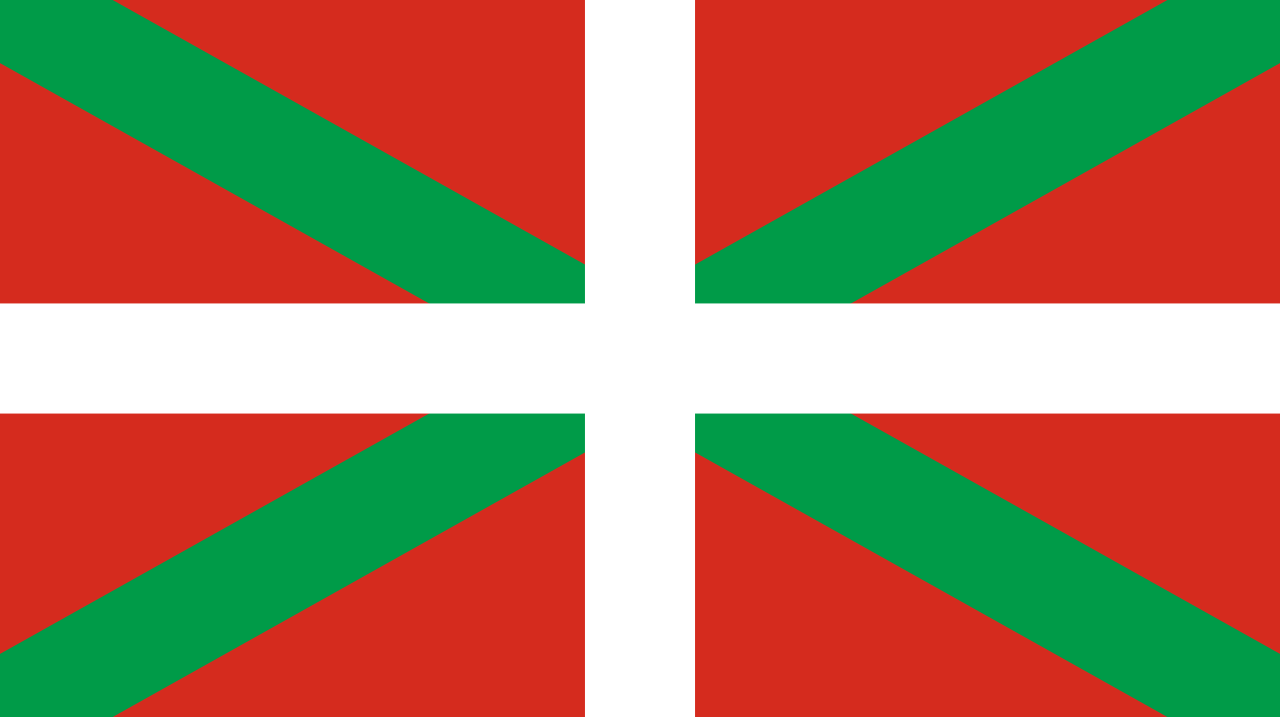 Comunidad Autónoma del País Vasco
Comunidad Autónoma del País Vasco
 Important port
Important port
 Architecture
Architecture